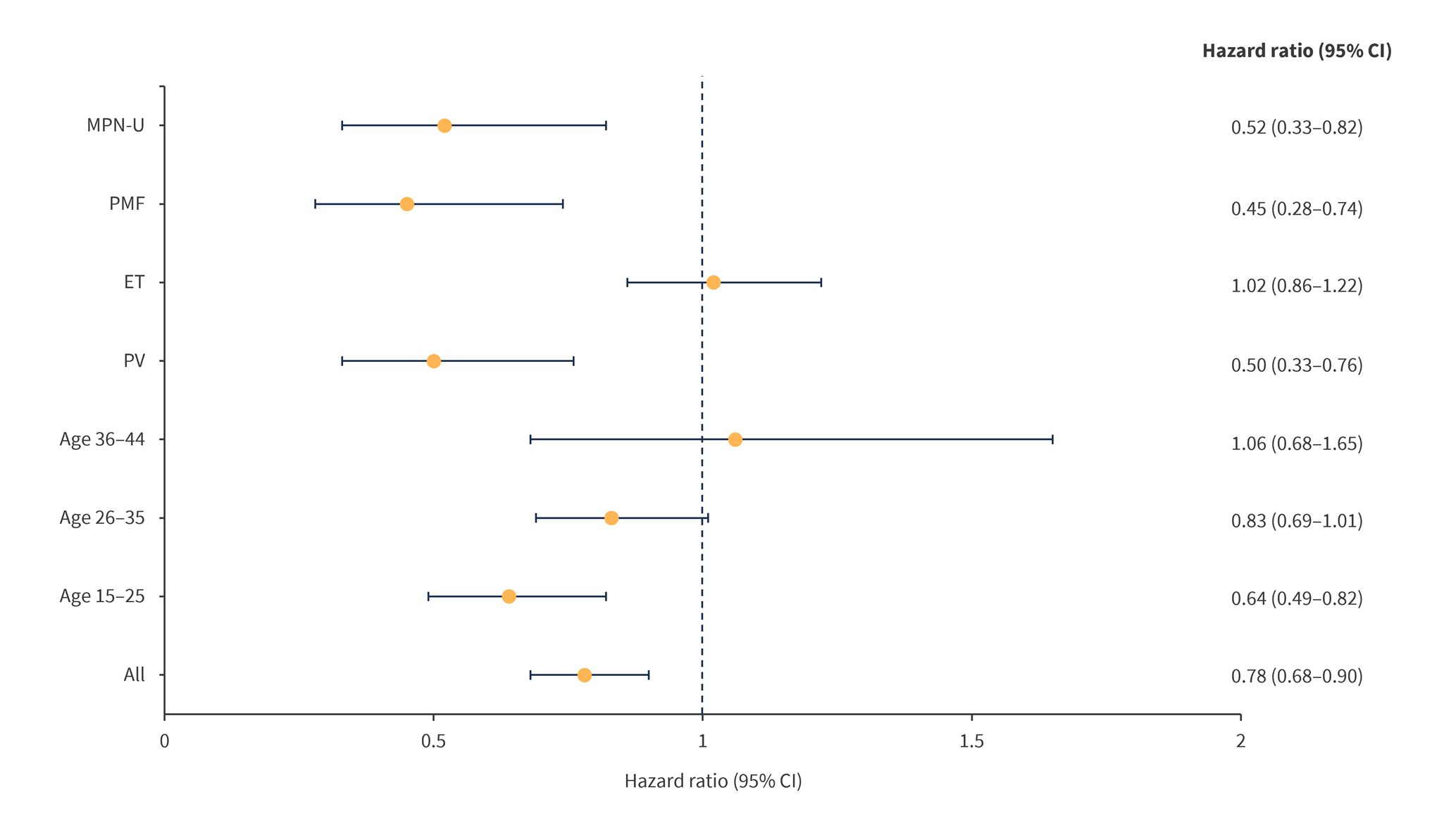All content on this site is intended for healthcare professionals only. By acknowledging this message and accessing the information on this website you are confirming that you are a Healthcare Professional. If you are a patient or carer, please visit the MPN Advocates Network.
The MPN Hub uses cookies on this website. They help us give you the best online experience. By continuing to use our website without changing your cookie settings, you agree to our use of cookies in accordance with our updated Cookie Policy
Introducing

Now you can personalise
your MPN Hub experience!
Bookmark content to read later
Select your specific areas of interest
View content recommended for you
Find out moreThe MPN Hub website uses a third-party service provided by Google that dynamically translates web content. Translations are machine generated, so may not be an exact or complete translation, and the MPN Hub cannot guarantee the accuracy of translated content. The MPN Hub and its employees will not be liable for any direct, indirect, or consequential damages (even if foreseeable) resulting from use of the Google Translate feature. For further support with Google Translate, visit Google Translate Help.
Rates of childbirth amongst women with myeloproliferative neoplasms
Bookmark this article
Pregnancies in patients with myeloproliferative neoplasms (MPN) are often associated with poorer outcomes, including an increased risk of pre-eclampsia, as well as maternal and fetal morbidity. However, there are limited data on childbearing and birthrates amongst patients with MPN compared with the general population.1
Here, we summarize a retrospective analysis by Landtblom et al.1 published in Leukemia on the childbirth rates in women with MPN.
Study design1
- Women with an MPN diagnosis, aged between 15 and 44 years, were selected from healthcare registers in Sweden.
- Patients were age-matched in a ratio of 1:4 with controls from the general population.
- The main outcome was time to first live childbirth post-MPN diagnosis.
- Subgroup analyses were performed by age and MPN subtype.
- Secondary outcomes were miscarriage rate, and stillbirth pre- and post-MPN diagnosis.
Key findings1
- A total of 1,141 patients with MPN and 4,564 control participants were included in this study.
- A 22% decreased childbirth rate was observed amongst the patients with MPN, compared with the control cohort (Figure 1).
- Essential thrombocythemia was the only subtype with similar childbirth rates to the control group.
- Childbirth rates were significantly reduced in all other MPN subtypes.
- Women aged 15–25 years were observed to have significantly reduced birthrates compared with the control group.
- No significant differences in birthrates were observed in any other age category.
- At the time of diagnosis, 61% of women with MPN had given birth to at least one child, compared with 67.3% in the age-matched controls (p < 0.001).
- With mean follow-up of 5 years, the risk of miscarriage was not significantly increased amongst patients with MPN compared with the control group; hazard ratio 1.25 (95% confidence interval [CI], 0.89–1.76).
- However, women with MPN were more likely to have experienced a previous stillbirth, with fewer children in total.
Figure 1. Hazard ratio of live births per MPN subtype and age at diagnosis*

CI, confidence interval; ET, essential thrombocythemia; MPN-U, myeloproliferative neoplasms-unclassified; PMF, primary myelofibrosis; PV, polycythemia vera.
*Data from Landtblom, et al.1
|
Key learnings |
|---|
|
- Landtblom A, Andersson T, Johansson A, et al. Childbirth rates in women with myeloproliferative neoplasms. Leukemia. 2024. Online ahead of print. DOI: 10.1038/s41375-024-02216-8
Related articles
Newsletter
Subscribe to get the best content related to MPN delivered to your inbox






